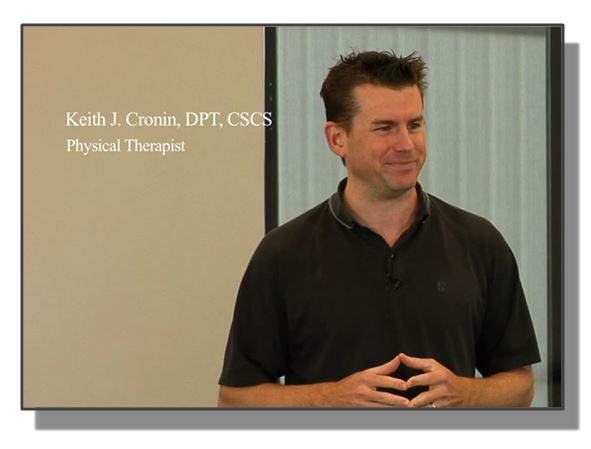Whether an ankle sprain, ACL rehabilitation, or perhaps rotator cuff tendonitis, it is commonly known that injured athletes can benefit from physical therapy.
But what about concussions? Can physical therapy help?
Here is what all parents, coaches, and athletes should know about how physical therapy can be beneficial following a concussive event.
How PT can help
Before discussing how physical therapists can help treat concussed athletes is important to know this: PTs cannot heal the brain; only the body can heal the brain.

In MomsTEAM and Brooke de Lench's PBS concussion documentary, The Smartest Team: Making High School Football Safer, I told the Newcastle High School football players that, "Once you have a concussion, from a physical therapy end, there is not a lot I can do. I can put you through different training regiments to get you back on the field but inevitably that involves with your head healing." (I should note that, after that introduction, I did show the players how strengthening their necks could help reduce the chances that they would suffer a concussion in the first place).
I was right in making that statement; up to a point.
A concussion results in a metabolic complication where the brain requires more blood to heal, but circulation is restricted. The physical, emotional, and mental symptoms that follow are the result of that trauma. The body has the capability to heal the brain, but requires an ideal environment.
PTs can, however, help in the recovery from concussion by monitoring the physical, mental, and emotional symptoms of an athlete to determine when they are no longer symptomatic. Neuroanatomy and pathophysiology are large components to PT education, indicating extensive understanding of how the brain acts upon the body. This "sports training" approach to concussions ensures as much as possible that athletes are fully healed before returning to competition.
There are three areas where physical therapists can help create the ideal healing environment for young athletes.
1. Dizziness and balance training
Following a concussion, an athlete may have difficulty with single-leg balance and focusing. The American Physical Therapy Association (ATPA) recommends that patients with concussions see a "a qualified vestibular physical therapist to provide specific exercises and training to reduce or stop dizziness and improve balance and stability."
Through training and appropriately stressing the vestibule-oculomotor reflexes, PTs can help lessen these symptoms, decreasing the athlete's unsteadiness on their feet.
2. Headaches
Concussions often result in neck trauma, at times causing cervico-genic headaches. PTs can evaluate the neck and surrounding musculature to determine if an athlete is suffering headaches from constriction to blood vessels and nerves in the upper spine.
PTs can also reduce the affects of cervico-genic headaches, decreasing irritability and improve the athlete's focus and attitude through appropriate use of :
- Neck strengthening exercises
- Stretching
- Mechanical Traction
- Manual therapy
- Ultrasound; and/or
- Electrical Stimulation
3. Exercise Progression Monitoring
Once symptom free at rest, athletes should follow a gradual return to physical activity before being cleared for a return to play. PTs can monitor progressive exercise programs in a non-biased, objective environment. If surrounded by fellow athletes and coaches, a concussed athlete might be inclined to say, "I am fine." With so much pressure on an athlete to return, a physical therapist's office provides an ideal atmosphere for athletes to progress without pressure. PTs can objectively analyze symptoms and report information to the physician, helping guide return to play recommendations. Physical therapy will ensure that athletes are evaluated and returned to play in a safe, unbiased, and effective manner.
Take-home message
While physical therapists, physicians, and athletic trainers offer great guidance and education for the concussed athlete, taking the necessary steps to the heal the brain is the most important. Following a concussion, healthcare providers are most concerned about preventing another injury prior to the first healing. Repeated concussions without full healing have been to shown have detrimental affects on athletes, including depression, outburst of aggression, dementia, and even suicidal tendencies. PTs can be an important member of an athlete's concussion management team, helping to ensure that they only return to play once their brains have fully healed.
For the APTA Guide to Concussions, click here.
Posted September 6, 2013








